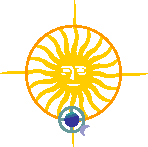

Physics
Course in Information Retrieval

 |
 Physics Course in Information Retrieval |
 |
THE PLANETARIUM IN TORUN

It has been operating for over five years. From February 1994 to June 1998, 550 thousand spectators saw almost 6000 projections, which included 16 astronomical performances and a dozen of performances from the special series: "Music under stars".
In presented performances the astronomers from the Planetarium used, except their own productions, also the materials from:
Information about performances:
In the season from 15th of October to 30th of April 1999, the Planetarium gives performances:
The problems concerning the Sun presented during following performances:
*THE ROTATING EARTH - consequences of the Earth movements
"At first sight the sky seems to be static. But you need only a few hours to notice the rotations of the Sun, the Moon or stars. Looking attentively we will see that one of the stars does not change its position and determines the directions of the world and our latitude. When observing the sky within few nights, we will see also changes of the position of the Moon against the stars. It is its motion about the Earth. Thanks to that the Moon changes its phases. At last, observing the sky within a few months, we will notice next changes caused by the slow Earth motion about the Sun. All these movements are well seen with the naked eye. How to observe and understand them? The performance " The rotating Earth" exactly captures the basic phenomenons of the celestial sphere in different seasons" (a fragment of advertisement materials of the Torun Planetarium).
This performance deals among others with such problems like: the influence of the Sun radiation on the Earth surface, the seasons and measurements of the Sun radiation.
*THE LIGHTS OF THE COSMOS - the performance about the stars lives
"Every clear night we may see about 3 thousand stars, strip of the Milky Way, nebulas and star clusters, but they still remains for us only small and weak sources of light. Astronomy gives us the opportunity to look at the unusual objects at close quarters. We can see black giants, small pulsars - the cosmic lamps and mighty black holes absorbing all matter from their neighbourhood. We will see gravitational dance of the stellar systems; we will know the origins and the future of our great star - the Sun" (a fragment of advertisement materials of the Torun Planetarium).
This performance deals with the problems concerning the reactions inside the Sun, the Sun as an evolving star, the Sun radiation and its spectrum.
"The lights of the Cosmos" - a fragment of text relating to Sun
Page elaborated by Grażyna Pazdyka
Your comments Subject Librarians Webmaster Polish Version Update : March 1999